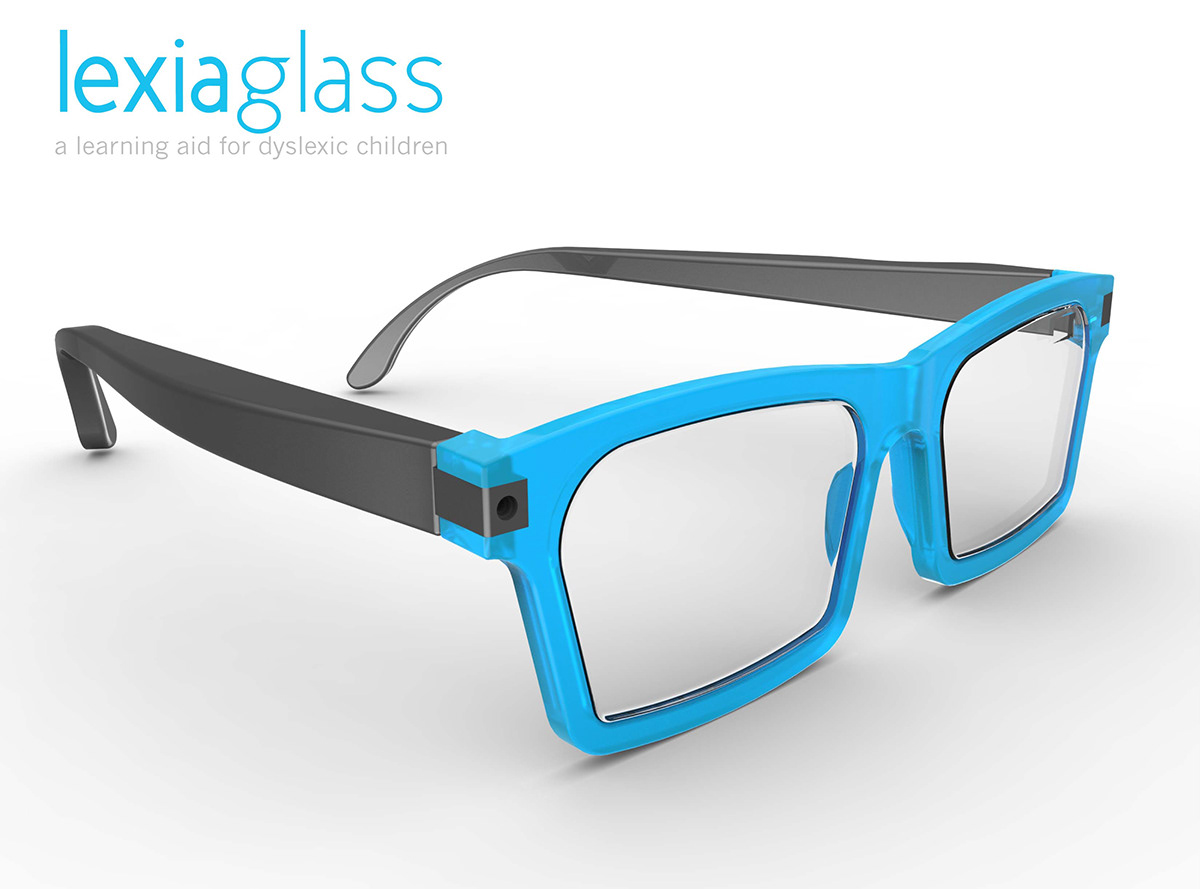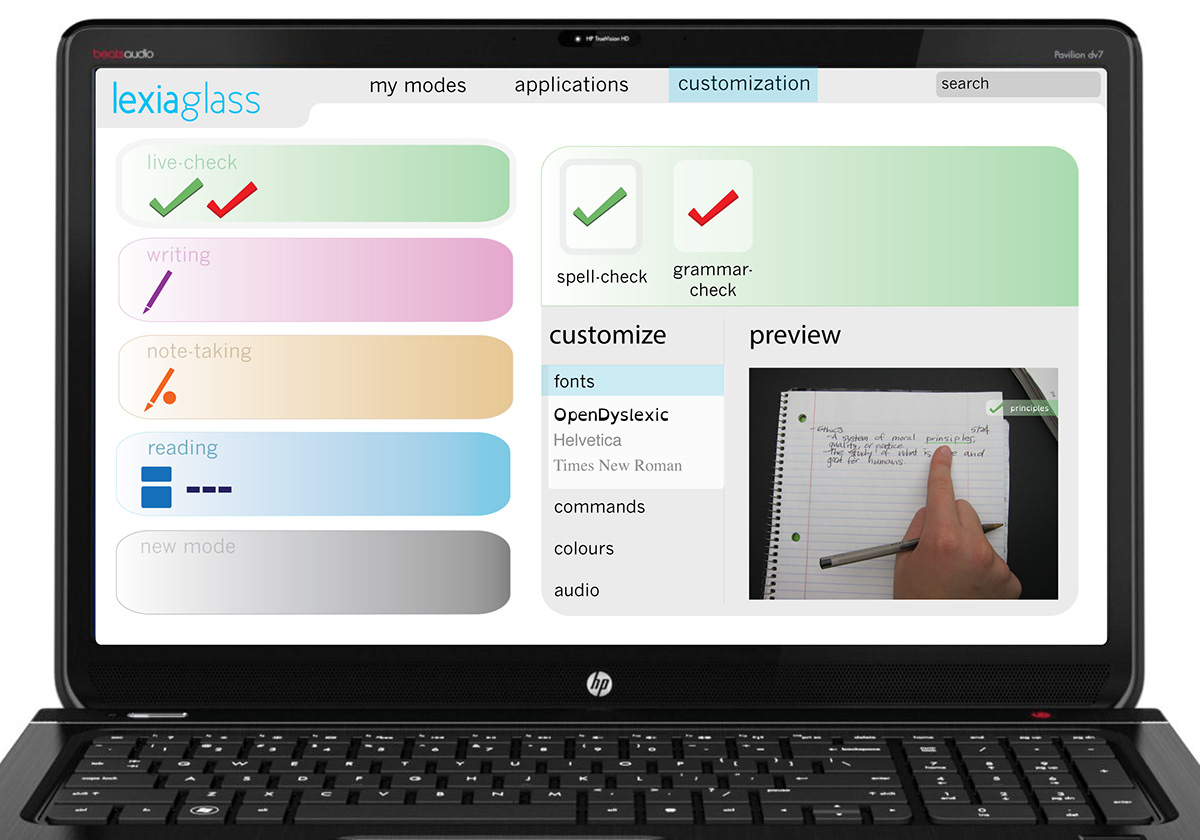This was a project I did at Western Washington University, together with my classmate Melina Edgerton.
We began our process by researching the new technology provided in google glass. We then searched for areas where this technology could solve real problems and finally landed on developing an aid for dyslexic children. From there on we researched and interviewed people with dyslexia - and came to valuable insights that greatly shaped our solution. We came up with around 12 refined ideas that we sent out to a focus group and got feedback.
From there we designed a physical device as well as an interface. The physical device must be discreet and intuitive, keeping it simple. Therefore all the set up and customization happens in the computer.
Our target group are middle schoolers, who know how to read and write but struggle to keep up in normal schoolday activities. We wanted to adress the social aspect as well as creating a highly customizable solution since dyslexia is different for everyone in severity and symtoms.
For more information ask me for the process book.


LexiaGlass is partly a physical product but is also a software in itself. Carl, below, uses his glasses in school all day and then uses his computer or phone to set it up. The application in the glasses is designed to be as minimal and simple as possible while in school - minimizing the choices and gathering functions in "modes" for different activities.

In the computer, via bluetooth, I can access my modes, my library of applications as well as customization for the apps. For the interface we tried to strip down the information and use icons and colouring to be the main code. This interface addresses children as well as parents. It's basically three tabs, "My modes", "Applications" and "Customization".
These pictures are snapshots out of the interface.



The snapshot above shows how you in the applications library can pick and drag your application to the mode on the left.


Every application is a function to aid dyslexia in different every-day tasks. In the system you click on it to see a preview of what it would look like through the Lexiaglass.

This is what it would look like through lexiaglass, and you navigate by simply swiping your temple.

Since children change prescription often, the heavy electronics are in the temples and the frames are interchangeable. From there you can develop colours and shapes as you like.



